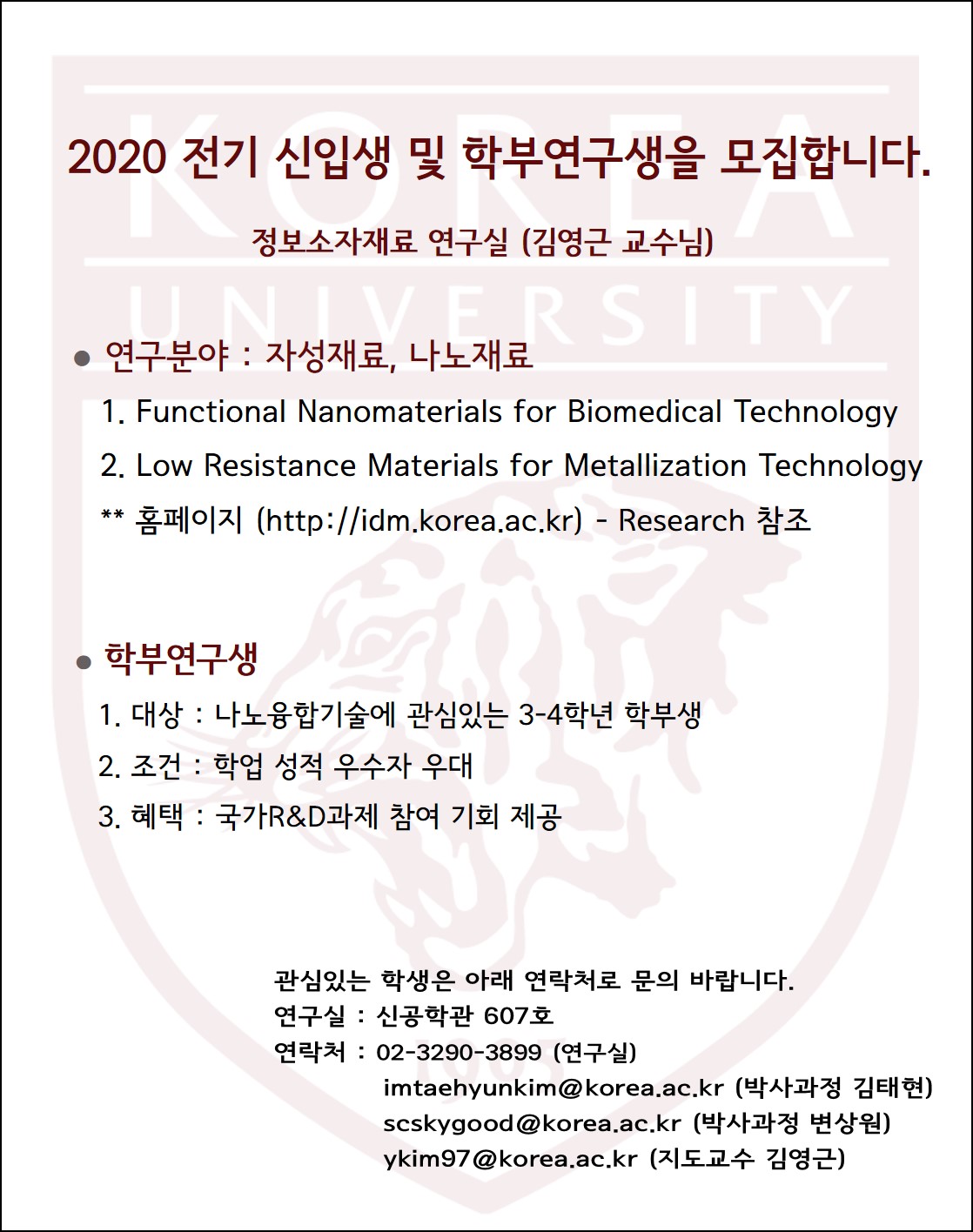
고려대학교(총장 정진택) 공과대학 신소재공학부 김영근 교수 연구팀이 차세대 자기메모리(MRAM) 개발과 구동 원리를 이해하는데 필수적인 비대칭 교환결합력을 측정하고 그 원인을 밝혀냈다. 비대칭 교환결합력이란 비자성 박막과 자성 박막의 접합구조에서 나타나는 스핀 현상이다.
자기메모리(MRAM)는 다층의 자성 박막을 이용하여 정보를 저장하고 처리하는 메모리 소자로서 전원을 꺼도 정보를 기억하는 비휘발성 특성이 있으며, 최근 스핀전달토크(spin transfer torque, STT) 기록 방식의 MRAM이 상용화되었다. 차세대 MRAM 경우, 스핀궤도토크(spin-orbit torque, SOT)를 이용하는 방식이 동작 속도와 에너지 효율 측면에서 유리할 것으로 기대되어 세계 곳곳에서 경쟁적으로 개발하고 있다.
스핀전달토크의 구동속도와 스위칭 전류밀도는 비대칭 교환결합력의 크기와 방향에 따라 크게 영향을 받는 것으로 알려져, 비대칭 교환결합력이 발생하는 원리를 이해하는 것이 중요하다. 그러나 스핀궤도토크의 경우, 비대칭 교환결합력의 크기와 방향이 스위칭에 미치는 영향이 거의 알려진 바 없어 추가적인 연구가 필요하다.
스핀-궤도 상호작용이 강한 금속층과 자성층 사이에 수 나노미터 두께의 초박막 산화물 계면층을 넣어주면 두께에 따라 비대칭 교환결합력의 세기가 진동하는 현상을 발견했다. 이는 초박막 산화물의 반도체적 특성 변화에 의한 것임을 확인하였으며, 산화물 계면층의 밴드갭 에너지에 따른 비대칭 교환결합력의 변화를 이론적으로 규명했다. 이에 따라 계면 산화층의 두께에 따른 비대칭 교환결합력의 세기를 측정하고 이론적으로 규명하여 스핀-궤도결합 원리 규명에 실마리를 제공할 것으로 기대된다.
과학기술정보통신부 원천기술개발사업(미래소재디스커버리사업) 지원으로 수행된 이번 연구의 성과는 국제학술지 네이처 커뮤니케이션스(Nature Communications)에 게재됐다.


출처: 에너지경제신문, 2021.06.02, https://www.ekn.kr/web/view.php?key=20210602010000438
Ruderman–Kittel–Kasuya–Yosida-type interfacial Dzyaloshinskii–Moriya interaction in heavy metal/ferromagnet heterostructures
Nature Communications 12, 3280 (2021)
[DOI: https://doi.org/10.1038/s41467-021-23586-y]
The manipulation of magnetization with interfacial modification using various spin-orbit coupling phenomena has been recently revisited due to its scientific and technological potential for next-generation memory devices. Herein, we experimentally and theoretically demonstrate the interfacial Dzyaloshinskii–Moriya interaction characteristics penetrating through a MgO dielectric layer inserted between the Pt and CoFeSiB. The inserted MgO layer seems to function as a chiral exchange interaction mediator of the interfacial Dzyaloshinskii–Moriya interaction from the heavy metal atoms to ferromagnet ones. The potential physical mechanism of the anti-symmetric exchange is based on the tunneling-like behavior of conduction electrons through the semi-conductor-like ultrathin MgO. Such behavior can be correlated with the oscillations of the indirect exchange coupling of the Ruderman–Kittel–Kasuya–Yosida type. From the theoretical demonstration, we could provide approximate estimation and show qualitative trends peculiar to the system under investigation.


